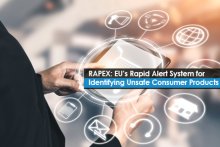Ever since the eCTD submission became mandatory by FDA in 2008, the life sciences industry has been facing certain difficulties in regulatory processes. Even though the electronic common technical document has been of great help in managing huge volumes of important documentation; there are a few glitches that complicate the submission process for the organizations. In this post we’ll be discussing about those challenges faced by life sciences companies in eCTD submissions. Read on!
The role of eCTD is to help pharmaceutical companies enhance the submission procedure by bridging the gap between the time and market and minimizing expenses. However, a recent analysis made by the Open Text™ Corp (a leading company in enterprise content management), it’s found out that most of the pharmaceutical companies are struggling hard to meet the deadline created by FDA to comply with the standard using eCTD format.
What is eCTD?
eCTD or electronic common technical document is an interface designed for the pharmaceutical industry to transfer regulatory information. This module-based regulatory application format was developed by the International Conference on Harmonization (ICH M2 EWG). In 2008 the FDA (Food and Drug Administration) made eCTD format compulsory for all electronic submissions.
eCTD format enables pharmaceutical companies to submit applications to various regulatory authorities such as FDA without altering the data. This XML-based electronic version of the CTD is now widely used as preferred submission format for the US Food and Drug Administration (FDA) and the European Medicines Agency (EMA).
eCTD format is now widely used in the United States, Japan, the European Union and Canada. As per Harv Martens, a member of the ICH M2 Expert Working Group,
|“Pharmaceutical companies handle huge amounts of documentation for regulatory submissions. The information gathering process is very costly. It causes delays and expense in the development of new drugs. The objective of the CTD/eCTD is to harmonize both the content and the way it is delivered for the new drug approval process.”|
Overview of eCTD
Electronic Common Technical Document comprises of 5 modules
- Administrative information and prescribing information
- Common technical document summaries
- Quality
- Nonclinical study reports
- Clinical study reports
And it is further divided into 2 categories -
- Regional module: 1
- Common module: 2-5
The main role of eCTD in pharmaceutical industry is regulatory submissions. And it is done by harmonizing the blueprint and module-based format of pharmaceutical submission applications. This kind of submission ensures convenient and faster filing of applications. This interface is also upgraded by the ICH at regular intervals so as to make it more user friendly.
For instance, in February 2015, ICH’s M8 expert working group (EWG) released a draft implementation guide for ICH eCTD v4.0. It was the first major version change after the release of v3.0 in 2003.
Advantages using eCTD
- eCTD is built on acknowledged standards that haven’t changed much in all these years in integrating ICH requirements
- Regulatory tools used to review submissions have been upgraded and hence offer sturdy performance
- It follows a common format for both US & Europe with relatively simple changes ( Module 1 and STF acceptance)
- The life cycle offers detailed submission history along-with easy knowledge transfer for product
- Consolidated formation offers transparency to submissions -
- Simple tools are used for -Publishing Submissions
- Method is quite similar to paper work
- Share the updates with multiple Local affiliates involved in the submission processes
- Viewer is not required during the submission process
- Affordable implementation
Challenges faced by life sciences companies in eCTD submissions
In spite of all the benefits offered by the standardized framework of eCTD, there are still some setbacks with this kind of submission format that makes it quite a challenge for the life sciences companies. The major challenge is to find the regulatory tools that support the software adhering to the eCTD submission requisites.
Other eCTD challenges
- Requires cutting edge technology and seasoned staff
- Not all the content is in a standard format. Hence standardization is required
- Regional differences seen in hyperlinking, bookmarking and PDF version
- Difficult to implement last minute changes
- Product knowledge is lost if the concerned employee quits
- Local affiliates have limited access to create or customize
- validation rules vary from region to region
- Baseline submissions are costly and likely to be of limited value
- Life-cycle management is challenging
- Differences seen in authentication of different regions
- Consolidated approach to drafting of dossier
What steps should life sciences companies take to face the eCTD challenges?
|“Always listen to experts. They’ll tell you what can’t be done, and why. Then do it.” ~ Robert A. Heinlein|
As eCTD format has become mandatory in the key markets, it has become essential for the companies to conceive a unified environment that aids the lifecycle of every kind of inherent submission. In this way, they can effortlessly manage the exhaustive system of accumulating, acclaiming, releasing and documenting new drug/medical device applications.
However, in most of the cases, companies lack such an integrated platform. Even though some pharmaceutical companies have some of the components, there are still many fields where key functionality is incorporated in silos. There are firms, who still follow the traditional paper-based methods, thus wasting both considerable amount of time and money.
In order to successfully carry out the eCTD submission, pharmaceutical companies must grasp all documents, including assortments, responses to questions, modifications and restorations in a consistent electronic format.
The primary component of eCTD submission is XML “backbone” file which offers metadata about content files. It also gives lifecycle instructions for explaining the submission and each document within the submission. Life sciences companies should follow this data structure, as it greatly helps them with effective submission of their documents at faster rate.
The pharmaceutical companies should use a primary software product to manage the integrated regulatory data and regulatory submissions process.
So those were some of the major challenges faced by life sciences companies in eCTD submissions with relevant tips to face them. Hope you found this post useful!





